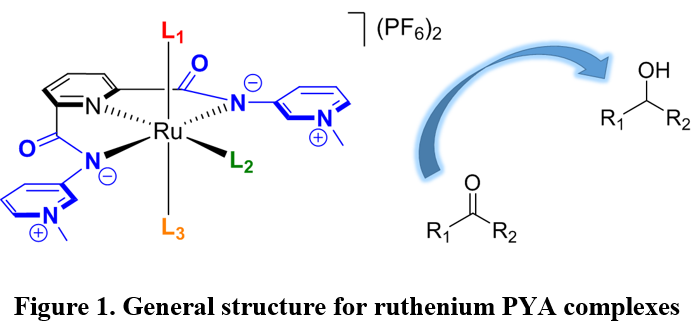Pincer-type Pyridylidene Amide (PYA) Ruthenium Complexes in Transfer Hydrogenation Catalysis
Ligand systems that offer flexibility and assist the metal in catalytic bond making and breaking have recieved much attention recently.1 Pyridylidene amide (PYA) ligands have been shown to be electronically flexible N‑donor sites and have suceesfully been used for several applications in homogeneous catalysis, such as in challenging water oxidation and transfer hydrogenation.2,3 Here we will present new pincer-type ligands based on the well‑known pyridine‑2,6‑dicarboxamide scaffold,4 now containing two PYA moities. The N3-pincer cavity allows for a facile synthesis of different ruthenium(II) complexes which can be further modified in an easy one step reaction (Fig. 1). We will discuss the influence of different PYA ligand systems and the variation of spectator ligands on the electrochemical and photochemical properties of the complexes and on their catalytic activity.

[1] Julia R. Khusnutdinova, David Milstein, Angew. Chem. Int. Ed., 2015, 54, 12236-12273.
[2] Miquel Navarro, Mo Li, Helge Müller-Bunz, Stefan Bernhard, Martin Albrecht, Chem. Eur. J., 2016, 22, 6740-6745.
[3] Kate F. Donnelly, Candela Segarra, Li-Xiong Shao, Rachelle Suen, Helge Müller-Bunz, Martin Albrecht, Organometallics, 2015, 34, 4076-4084.
[4] Pramod Kumar, Rajeev Gupta, Dalton Trans., 2016, 45, 18769-18783.